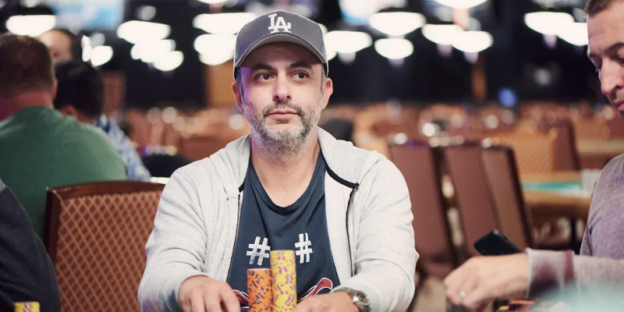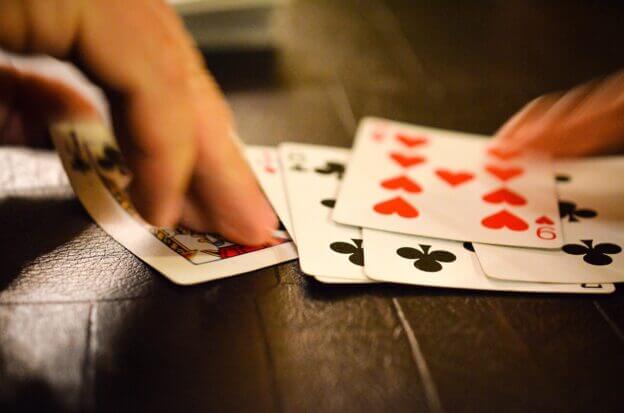When you are sitting preflop and deciding on entering a raised pot by cold calling, you are doing so because you have a playable hand that doesn’t have the characteristics for 3-betting and is too strong to fold.
When you play low stakes, your cold calling range should become tighter as you are entering the pot in a passive way by calling preflop. This means you don’t have fold equity and therefore you are guaranteed to pay rake. Because the rake at low stakes is relatively higher in comparison to mid or high stakes, you should be quite selective with the hands you want to enter the pot with in this way.
In the following table, we can see that the higher the stakes, the higher the cold call frequency will be.
The high frequency in the bottom row is due to the fact that you are guaranteed to play a pot Heads Up IP while at the same time not having to fear someone else behind you coming in for the squeeze.
Your stack size plays an important role in deciding whether to call preflop.
It’s important to know this not only when you have a short stack, but also when you face an opponent with a short stack. You have to understand which hands are not profitable to play anymore.
In the following clip from our Shortstack Bootcamp course, JNandez talks about how to adjust your cold calling strategy depending on your stack size by using hand examples of Button (BTN) vs Cutoff (CO).
As we move closer to the button, we are widening our cold calling range. The closer you are to have guaranteed position postflop, the wider your ranges are going to be.
In the following graph, you can see an overview of the frequencies for Middle Position (MP) vs Early Position (EP) for low stakes, with the cold calling frequency for different groups of hands highlighted in yellow.
Hand Examples
In the following section, I will break down a few of these groups of hands with examples of what would generally be the bottom of our cold calling range.
Kings
Call 27% MP vs EP
Kings that could enter the pot by cold calling are double-suited or double-paired Kings. When it comes to single-suited kings with no Ace, you have to be extremely selective and look for strong connectivity and high cards in order to justify cold calling. We generally aren’t that interested in 3-betting Kings preflop vs tight ranges as these hands perform so poorly against a Aces heavy 4-betting range.
Kings that have Aces, and especially the nut suit, are fine to call because we benefit from pulling in other players behind us, against which we can have a dominating suit.
Queens
Call 13% MP vs EP
Very similar to Kings, if we have the Ace with the nut suit, we benefit a lot from pulling other players with lower pairs or lower suits. It’s also not a hand that wants to 3-bet and then face a 4-bet and have to fold.
With double-suited Queens we are more selective than with Kings because we have a weaker pair, so we need better side cards with better connectivity.
With single-suited Queens we need to be extremely selective. Anything weaker than the hand example shouldn’t really be played in this position. People behind you could enter the pot by coming in with Kings and have you dominated.
There is always the chance that someone raises behind you and that’s obviously not a great scenario.
Double-Suited Rundowns (with Ace)
Cold Call 17% MP vs EP
This is an interesting group. This range of hands is a complete mix between calling some, folding some, and 3-betting some. We’re 3-betting the strongest ones with the best connectivity and the highest cards, and calling the ones that are sort of in-between.
These examples are a little bit more disconnected and don’t do too great in 3-bet pots, they lack high cards or connectivity.
Conclusion to Calling Preflop
As a general rule in pot-limit Omaha, you should play a tight strategy at low stakes. At mid and high stakes, however, you can come into the pot with a wider range and call more frequently. This is especially relevant in cold call poker situations, where adjusting your strategy based on stake levels becomes crucial for maximizing profitability.
Essentially, you want to call with hands that are not strong enough to 3-bet but are too good to fold. In these cases, calling preflop allows you to continue with a playable hand without overcommitting chips. Understanding when to employ calling preflop effectively can significantly enhance your overall game plan.
Additionally, you should play tighter when out of position (OOP) and looser when in position (IP). Positional awareness is key, so adjusting your cold calling range accordingly is essential for experienced PLO players aiming to optimize their performance.



































